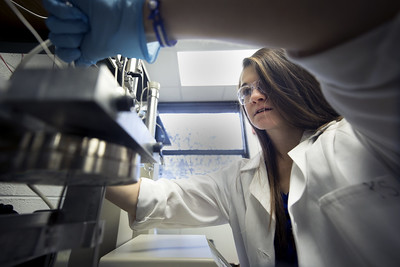CARBON SEQUESTRATION
Closing the Loop
Incorporating carbon dioxide into the production of new cement-like materials can reduce existing emissions and improve durability.
An interdisciplinary team at the University of Michigan has developed a way to mitigate the effects of the material on the environment by using carbon dioxide (CO2) as a resource—capturing it, mineralizing it, and incorporating it into the composition and structural use of a new, super low-carbon-footprint, engineered cementitious composite (ECC) concrete.
Sequestering carbon, from cement or a coal-based power generation plant, during the production of ECC and ECC products does not only have environmental advantages. Doing so also increases the durability of the structures it will create. This process represents a viable, actionable way to create what the University of Michigan’s Global CO2 Initiative calls “a closed loop of carbon flow for a sustainable construction industry.”
“The climate potential is enormous, if we combine new ways of building with new ways of making it resilient,” says Volker Sick, director of the initiative. “It’s an exciting confluence of different technologies that, in and of themselves, are groundbreaking, and together they are almost too good to be true.”

“The climate won’t wait until we’re ready. We need to catch up.”
